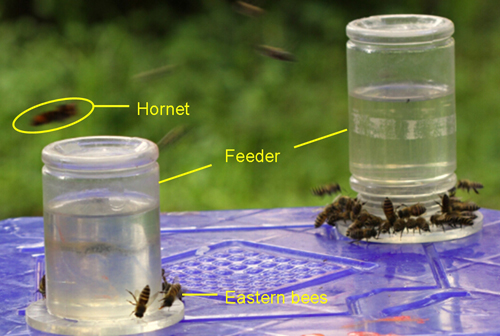Imidacloprid is a neonicotinoid pesticide: its metabolites are nicotinic acetylcholine receptor (nAChR) agonists in honey bee neurons and therefore have widespread behavioral consequences. Apis cerana is a native bee that is an important pollinator of agricultural crops and native plants in Asia.
Previous studies have shown that pesticides such as carbamates, synthetic pyrethroids, and imidacloprid are toxic to Apis cerana. However, studies have not explored the sublethal effects of neonicotinoids on A. cerana even though imidacloprid is widely used in China. Prof. TAN Ken of Xishuangbanna Tropical Botanical Garden (XTBG) and his colleagues therefore tested the effects of field-realistic doses of imidacloprid on A. cerana foraging behavior and decision-making with respect to food source danger, the hornet V. velutina, a native Asian predator and an emerging threat to A. mellifera in Europe.
Given that neonicotinoids can alter A. mellifera foraging behavior, they hypothesized that neonicotinoids can also impair a bee’s judgment about danger, altering its ability or its willingness to avoid predators.
They found that there was a significant effect of pesticide concentration on the proportion of trained bees that returned to the feeder. Increasing pesticide concentration significantly decreased the amount of sucrose solution that bees collected.
The study provided the first demonstration that sublethal concentrations of a neonicotinoid, imidacloprid, can also impair honey bee decision-making about danger, significantly increasing the likelihood that a bee would visit a dangerous feeder with a hornet predator. It also provided the first data demonstrating that foraging by A. cerana can be influenced by sublethal doses of imidacloprid, which is also used widely in Asia.
The study entitled “Imidacloprid Alters Foraging and Decreases Bee Avoidance of Predators” has been published in PLoS ONE.

The experiment (Image by TAN Ken)

